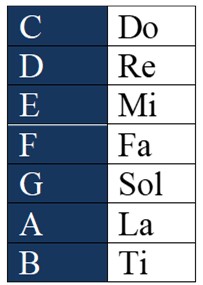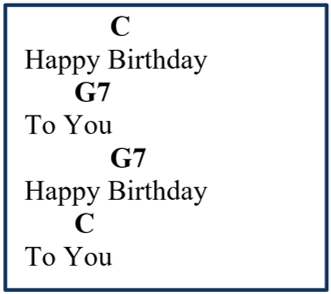Chord notations are notations to represent the names of the chords. We have already learned that the basic nomenclature for notes is as follows:

Now we will highlight that the chords are also identified with this notation. In a chord notation, the name of the chord ends up receiving the name of the fundamental note (1st degree) of the chord.
For example, a chord formed by the triad C, E, G is called C. This is usually the lowest note (at the bottom) of the chord. But this detail of the bass is not a rule, as the chord may be inverted (don’t worry about that detail now, as we will study this subject in depth in other topics).
Well, now we can write the chords in the order in which they appear within the song. This is usually done on top of the lyrics, showing the right point at which the chord should be played, as in the example below:

Try to memorize the symbology of the chord notations we show here if you don’t already know it. Write down all the notes on a piece of paper using their representation and think about which note each letter refers to. This reading will soon be automatic.
Another way to write a chord notation is representing the bars of the song, as we will see in the next article.
If you want to know everything about how to give name to chords, go to this article.
Go to: Bar lines and measures
Back to: Module 3
